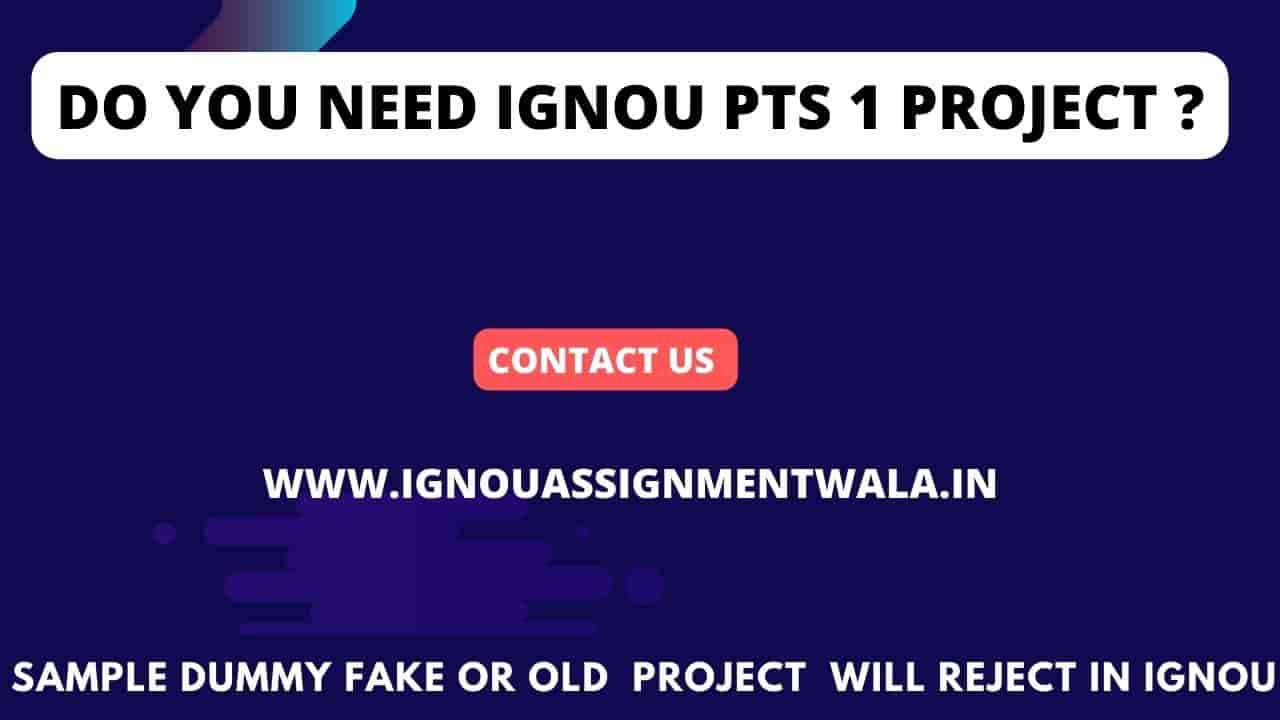HOW TO MAKE IGNOU PTS 1 PROJECT REPORT
Tourism is now one of the businesses with the highest growth rates in the world. It has evolved rapidly during the previous two decades. Tourism has become a priority at all levels of development—global, regional, national, and local. Furthermore, there are far too many schools and institutions that provide bachelor’s degree programmes to those individuals. In India, the IGNOU BTS Project involves a large number of IGNOU students. The IGNOU BTS Project focuses on tourist administration, tourism development, tourism marketing, the transportation business, and hotel management, among other things. The IGNOU BTS Project includes courses in resort development, food service management, ecology, the environment, and tourism, as well as intercultural communication. Students must submit an IGNOU BTS Synopsis & Project Report in their first and second years of study. Tourism has become the key engine of economic development in every nation; thus, the course has substantial value and relevance in the current world.
The main goal of IGNOU PTS 1 PROJECT is to provide knowledge, stamina, and skills in the academic field of tourism at the bachelor’s degree level. Students should select an IGNOU PTS 1 PROJECT from this specific bachelor’s level degree, such as IGNOU PTS 1, PTS 2 in order to gain a deeper grasp and comprehensive understanding of the curriculum.
Read more : eGyanKosh: Semester-I
Read more : HOW TO DOWNLOAD IGNOU STUDY MATERIAL ? – IGNOU Assignment Wala

1. When to Submit IGNOU PTS 1 PROJECT?
The deadline for submitting project reports for the IGNOU TEE June 2022 is earlier than the 30th of June 2022. However, if students are unable to submit their assignments, projects, or other important papers due to a network outage on the server, the institution may extend the deadline even further.
According to the most recent notice, students may also submit their project reports until June 30th without incurring late fines.
Furthermore, it noted that owing to the harmful impacts of COVID 19 on the country, students must submit their project reports online rather than offline.
2. How to score good marks In IGNOU PTS 1 PROJECT?
In order to score good marks, students should submit their IGNOU BTS Project on time and correctly, IGNOU published a set of guidelines. The Learner Support System from all of the centres has been delayed due to the impact of COVID 19, according to the notice that was made public. Additionally, it was reported that the University had started accepting project submissions online to make things easier for the applicants.
The notice also mentioned a few of the points that the students need to abide by for their IGNOU project submission.
- The project criteria must be fulfilled precisely as described in the booklet that was previously sent to the students along with their SLM.
- Before submitting their projects online, students must confirm that they have signed the original Proposal Proforma, Biodata, and project description. Before scanning copies for online submission, the Project Guide must sign the original certificate and any extra signatures.
- The project guide and description should be digitally approved by the students and sent to the regional centre. This information is available on the relevant RC’s official website.
- For projects that require fieldwork, special instructions will be supplied. Students may also contact the Program coordinator for assistance.
- For submittal, the original project materials must be scanned and converted to PDF format. In addition, the project’s Cover Page standards must be rigorously observed.
- The approved faculty of the regional centres will offer the students with additional recommendations for the viva-voce for the projects.
3. Key points to remember in IGNOU PTS 1 POJECT.
Following are the things you must keep in mind while making an IGNOU BTS Project:
- Identify and classify research issues
- Identify and utilize Proper study design for IGNOU BTS Project
- Conduct scientific evaluation at a systematic manner
- Collect and examine the information for IGNOU BTS Synopsis
- Learn How to work with proper statistical technique
Understanding The Market Profile: It is vital to understand the profile of tourists and to distinguish between several tourist categories to plan, in particular:
- Business Tourists: People who travel for business reasons, such as attending conferences, exhibits, or business meetings.
- Leisure Tourists: Tourists who travel for enjoyment or general interest.
- Specific tourists: this category comprises students, athletes, pilgrims, and any other group travelling for a particular reason.
Identify The Types of Tourist Facilities: The tourist facilities fall into two major categories: Manufactured facilities and Natural facilities.
Choose your topic’s goal and point: Make your topic as relevant, to the point, in accord, and praiseworthy as possible. Your IGNOU BTS Synopsis Project will be evaluated by the adviser at the event where you may display the record. With only a glance over your report, the advisor can give you a reasonable idea of the depth of your own understanding. Furthermore, regardless of whether he has the time to investigate your task and thoroughly, he will provide you with.
The following sections should be included in the IGNOU BTS Project Report:
- Cover page: On the first page, provide the title of the project, your name, address, the year, and your enrollment number.
- The contents of the IGNOU BTS Project should be on the second page, followed by a list of tables, maps, and figures/illustrations on the third page.
- The fourth page is used for acknowledgment.
- The fifth page is for alphabetical listing of abbreviations.
- You must offer an overview of your project, its strategy, including the justification for picking the project subject, goals, research methodology, including a description of the tools or methodologies utilised for data collecting and analysis, and the study’s constraints beginning on the sixth page. The IGNOU BTS report will be presented in this section.
- The second chapter will serve as the project’s main body.
- You will provide the project’s results and, if relevant, your suggestions in the final chapter.
If you need assistance with IGNOU BTS /BAVTM/BTSOL Synopsis/Project Report writing work, please contact/whatsapp us at ignouassignmentwala@gmail.com (8272862742)
Topics for IGNOU BTSOL Projects Based on PTS 1 Project (Indian Culture, Environment, and Tourism)
• The rituals, socio-religious activities, and traditions of cults or organizations in a territory or place. The research might also concentrate on unique rituals and traditions conducted by certain groups or cults. Fairs associated with local customs, religion, and/or social events. It might be an examination of the economic transactions taking place during the fair.
• Regional fine arts, including distinct dance styles, music (both vocal and instrumental), and painting traditions. The project may include documentary facts about the practice of fine arts as well as its growth and dissemination. You can also research particular artists who have contributed to the development of various art forms on a national or state level.
• Regional theater, includes folk theater. It is also possible to study the cinema of a certain region. A comparative study of theatre or film is also an option.
• The genesis, evolution, and current form of architectural styles. Individual monuments’ histories, visitor traffic, conservation status, and administration may all be studied. Styles and particular monuments can also be studied in comparison.
• Regional sculpture. A comparison of many styles and shapes. It is also possible to work on developing a specific style or shape over time.
• Archaeological sites in a region and their connections to other sites. A comparative analysis of sites in an area, as well as the visitor flow at these sites and any auxiliary attractions, can be conducted.
• A museum in your region/city. The museum’s artifact collection and care, as well as the interest of locals and tourists in the museum, are obvious areas. A study of a specific type of items at the museum, for example, can be done.
• Region-specific crafts and artisans. The issue of authenticity in craft forms and their economic viability, as well as the value of a craft in the region’s total commercial production.
• Textiles – small-scale production, materials, patterns, and so forth. Over time, development occurs. Special costume in an area, the evolution of regional fashions through time Specialist craftspeople involved in manufacturing and industrial organization can be researched.
• Tribal cultures in your area It is possible to research their social, economic, or religious structures or behaviors. A comparison of tribes in the aforementioned locations. Interaction of tribal and urban cultures Policies concerning tribes (whether government or non-government) and their influence on tribes
• A critical examination of government cultural policy. The policies and their impact on tourism, for example.
• Description of the distinctive aspects of the local environment.
• Conservation status – local environment
• Different approaches for promoting tourism in your community/region without affecting the environment.
• Developmental activities in your community and area, as well as their environmental effect
• The infrastructure required for access to your community’s or region’s environmental resources.
• Listing and categorizing your community’s/natural region’s resources.
• Conducting a survey of the community’s perceptions of its natural resources.
• Surveying tourist behavior in relation to the local/regional environment.
• Investigating the environmental protection measures implemented by hotels in your community.
• An inventory of the flora and wildlife of the local/regional area.
• The potential for tourist expansion, with a focus on local/regional flora and wildlife.
• Research the physical hydrology of your region/location.
• Being aware of environmental issues in your community
• Possibilities for interpreting your local landscape and the tourist.
• Local rules and laws governing environmental protection.
• Sikkim Tourist Attractions
• Kerala Ayurvedic Tourism
• A pilgrimage place of shri ayodhya ji Ram mandir
• An Investigation Into Religious Tourism in Kerala
• Kolkata’s Culture: A Tourist Attraction
• A Study of Pune’s Culture
• Uttar Pradesh Culture
• An Overview of Ahmedabad’s Culture
• Udaipur Temples
• Cultural, Arts, and Crafts Study in Maharashtra
• Hyderabad Archaeological Sites
• Tourism in God’s Own Country Kerala is on the rise.
• Sikkim’s Culture, Arts, and Crafts
• An Investigation into Kerala Beaches
• Kerala’s History and Culture
• Goa Cultural And Heritage Tourism
• A Study of Punjabi Culture
• An Investigation into Punjabi Cuisine and Tourism
• Delhi’s Cultural Heritage Sites
• A Study of Kerala Dances
• Sikkim Flora and Fauna
• Jim Corbett National Park’s Biodiversity
• Kolkata’s Biodiversity
• Pune Flora and Fauna
• Jharkhand Flora and Fauna
• Himachal Pradesh Biomes
• Environmental Awareness in Himachal Pradesh
• Wildlife Refuges and National Parks in Kolkata
• The Flora and Fauna of Maharashtra
• Environmental Degradation in Himachal Pradesh: Causes, Impact, and Public Awareness
• Gir Forest National Park’s Biodiversity
• Tourism’s Impact on Kerala’s Environmental Conditions
• Rajasthan’s Environment and Animal Habitat
• Goa Residents’ Attitudes Toward Ecotourism
• Bhopal Ecotourism
• Kerala Flora and Fauna
• India’s Flora and Fauna: A Case Study of the Rajasthan Region
• An Investigation of the Ecology and Environment of Andhra Pradesh





